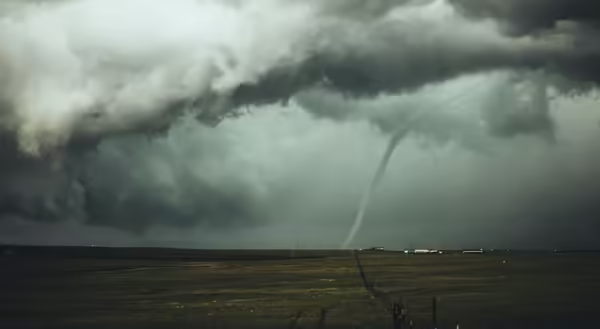
As of mid-September of this year, guess which state has had the most tornadoes for the year. Texas? Kansas? Oklahoma? Alabama? Nope, it’s Illinois!
As of September 11, Illinois has had 135 tornadoes. The state annual average is 54. Is this part of an ominous trend?
What is “Dixie Alley?”
We are all familiar with what is called Tornado Alley, an area from east central Texas on through Oklahoma, Kansas, Nebraska and even into the Dakotas. Year in and year out, this area experiences the highest number of tornadoes. It also has the most extreme tornadoes, although those are a very small percentage of all tornadoes.
To the east of Tornado Alley, there is a secondary area called Dixie Alley. Extending from Alabama and Mississippi on into Arkansas and Western Kentucky, it is another region that faces large numbers of tornadoes each year. Illinois is on the northern edge of Dixie Alley.
Is the frequency of tornadoes changing?
A recent study from Northern Illinois University with assistance from the Storm Prediction Center shows that there does seem to be a shift of tornado frequency to the east.
The study examined tornado frequency since the early 1970s. It showed that while the traditional Tornado Alley still has the greatest frequency of tornadoes nationwide, the frequency decreased. To the east, the tornadoes in Mississippi, Alabama, Arkansas, Missouri, Illinois, Indiana, Tennessee, and Kentucky have increased.
Aren’t we just seeing more tornadoes because of technology?
Sometimes I get the question, “aren’t we just seeing or capturing evidence of more tornadoes than we did 50 years ago?”
It is true that more observers do influence overall numbers. However, researchers don’t just look at numbers, they have also examined the conditions that are favorable for tornadoes and found those conditions have become more frequent as well.
Is this all due to climate change?
Are these trends due to a changing climate? At this point scientists can’t say that these changing areas of tornado activity are due to this effect. No, this does not debunk climate change, it just shows that researchers have integrity in their work.
Fortunately, at least for Illinois, most of the increased number of tornadoes have been on the low end of the Enhanced Fujita scale, meaning the EF0 category of 65 to 85 mph. Still enough to cause some roof and tree damage, but nothing compared to a tornado in the EF3 range of 136 to 165 mph. EF4 and especially EF5 tornadoes are very rare in Illinois. Those two categories make up less than 2% of all tornadoes in the United States.
About the Blog
All About Weather is a blog by Duane Friend that explores the environment, climate, and weather topics for Illinois. Get in-depth information about things your weather app doesn't cover, from summer droughts to shifting weather patterns. Never miss a new post! Sign up for our email list.
Duane Friend is the Illinois Master Naturalist Coordinator and Climate Specialist with University of Illinois Extension, serving the organization in many roles since 1993. Duane provides information and educational programs to adult and youth audiences in the areas of soil quality, weather and climate, energy conservation, and disaster preparedness. These programs provide practical solutions for families, farms, and communities. He assists families in creating a household emergency plan, farmers with the implementation of soil management and conservation practices, and local government officials and business owners with energy conservation techniques.